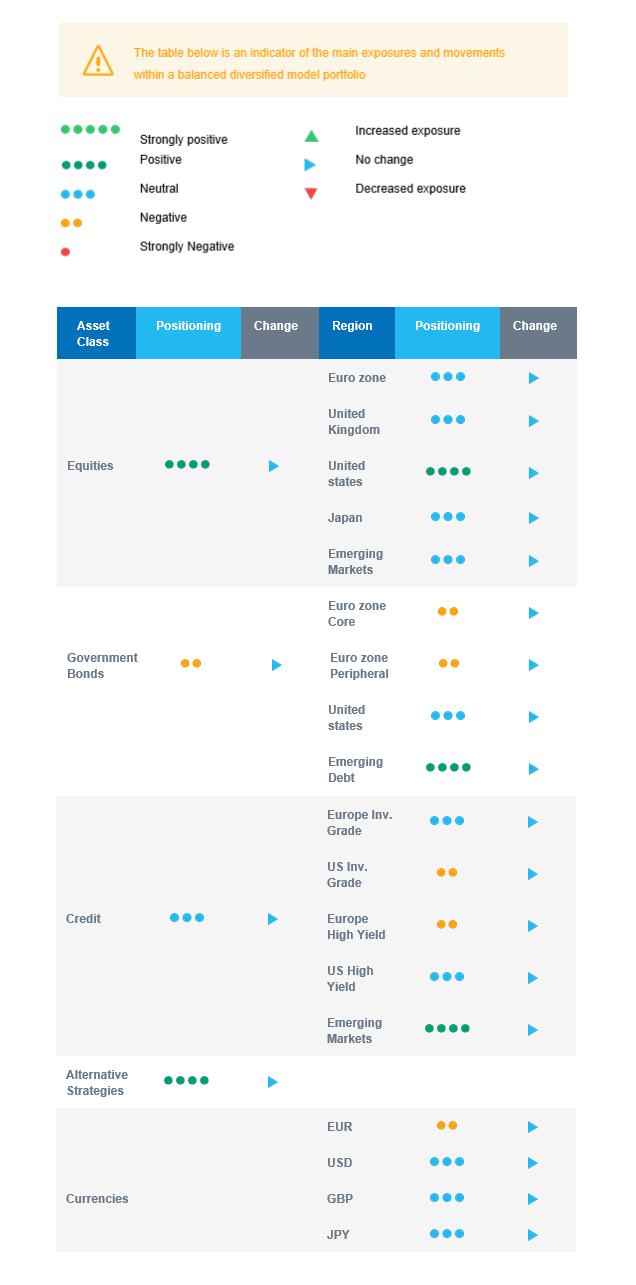Last week in a nutshell
- Both the US Federal Reserve Bank and the Bank of England lifted rates by 75 basis points. In the US, Chair Powell pointed out that the next hike in December could be a smaller one but the terminal rate in 2023 could be higher than anticipated by the Fed last September. Regarding the outlook for future hikes in the UK, the BoE stressed the peak in rates will be “lower than priced by financial markets”, prompting a decline in the GBP.
- The US economy added a stronger-than-expected 261K jobs in October, above market forecasts of 193K. As workers shortages persist, figures continued to point to a strong albeit moderating labour market, with the unemployment rate ticking up from 3.5% to 3.7%.
- Global business conditions worsened in the manufacturing sector in October. The headline index slipped from 49.8 to 49.4. In the euro zone, it fell to a 23-month low of 47.3, amid deteriorating demand and a worsening outlook. Looking at the bright side, the cooling of global demand eased supply chain delays and price pressures, a consistent and welcoming news.
- In its preliminary October estimate, Europe’s statistics office showed a further increase in headline inflation at an annual 10.7% pace, up from 10.0% the month before. It was the euro zone’s highest ever monthly reading since January 1999. Energy and food prices continued to rise the most in the 19-member bloc.
What’s next?
- The COP27 will continue with world leaders meeting in Egypt at this year’s UN climate summit. The objective is to discuss action to tackle climate change.
- As the beginning of the end for the Zero-Covid Strategy is now almost confirmed, markets will focus on Chinese assets. China agreed to approve BioNTech’s COVID-19 vaccines for foreign residents, in what would be the first mRNA vaccine for COVID-19 approved for use in China.
- Inflation-related figures will be published for key countries, including China and the USA. The University of Michigan will also publish its usual soft data on current conditions and consumer sentiment.
- On the political front, the US midterm elections’ stakes are high. Depending on the results, control of the Congress, may change hands from Democrats to Republicans thereby limiting Joe Biden’s agenda. All 435 seats in the US House of Representatives are up for re-election along with 35 seats in the Senate.
Investment convictions
Core scenario
- Central banks must strike a balance between the fight against inflation and the risk of financial instability. In the meantime, the next hike could be smaller but the terminal rate in 2023 could be higher than expected some months ago.
- Should we stop worrying about risky assets? Probably not, but at current prices, our positioning is temporarily slightly overweight equities.
- We further note that sentiment, positioning, and market psychology also point towards a continuation of the short-term uplift which started in October.
- Following the sharp rise in interest rates over the past year, short-term rates anticipations, and hence long-term yields, appear now relatively well anchored. We started adding fixed-income exposure to our portfolios via the US high yield segment.
- Our equity allocation reflects the conviction that European equities could also tactically benefit from a broad-based risk-on environment.
- We expect emerging market equities in Asia to outperform as valuation has become attractive while the region keeps long-term superior growth prospects vs. developed markets.
Risks
- Upside risks include that central bank actions are nearly priced for peak hawkishness and weak sentiment and positioning. Chinese re-opening in 2023 would be a substantial support for the global economy. Further, governments in Europe are adding fiscal aid as the energy crisis deepens, which could mitigate its negative impact.
- Downside risks would be a monetary policy error via over-tightening in the US or a sharp recession risk via a deeper energy crisis in Europe.
- The war in Ukraine is ongoing and signs of discomfort with Moscow are growing in the international community.
Cross asset strategy
- Our multi-asset strategy has become more constructive on attractive price levels but remains nimble and can be adapted quickly:
- Neutral euro zone equities, with a derivative strategy in place.
- Neutral UK equities, resilient sector composition and global exposure.
- Overweight US equities, with an actively managed derivative strategy.
- Neutral Emerging markets, but positive on Asian Emerging markets, expected to outperform as valuation has become attractive while the region keeps superior long-term growth prospects vs. developed markets. In the short term, investors positioning has drastically decreased, giving room for a snap-back.
- Neutral Japanese equities, as accommodative central bank, and cyclical sector exposure act as opposite forces for investor attractiveness.
- Positive on sectors, such as healthcare, consumer staples and the less cyclical segments of the technology sector.
- Positive on some commodities, including gold.
- In the fixed income universe, we have a slight short duration positioning.
- We continue to diversify and source the carry via emerging debt and US high yield debt.
- In our long-term thematics and trends allocation: While keeping a wide spectrum of long-term convictions, we will favour Climate Action (linked to the energy shift) and keep Health Care, Tech and Innovation.
- In our currency strategy, we diversify outside the euro zone:
- We are long CAD and underweight EUR.
Our Positioning
Global economic growth and inflation keep slowing down, but we register positive surprises on growth and less upward surprises on inflation than at the beginning of the year. We therefore tactically added to equities via the US and the euro zone to become slightly overweight. Regionally, our preferences go to Emerging markets and the US. On the fixed income side, we keep a slight short portfolio duration and upgraded our stance on US high yield debt to lock in an attractive carry. The asset class looks attractive with a sufficient buffer for defaults. We remain allocated to commodity currency via the CAD.

